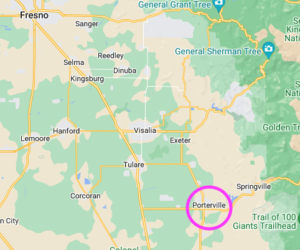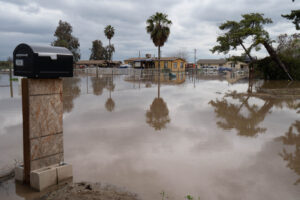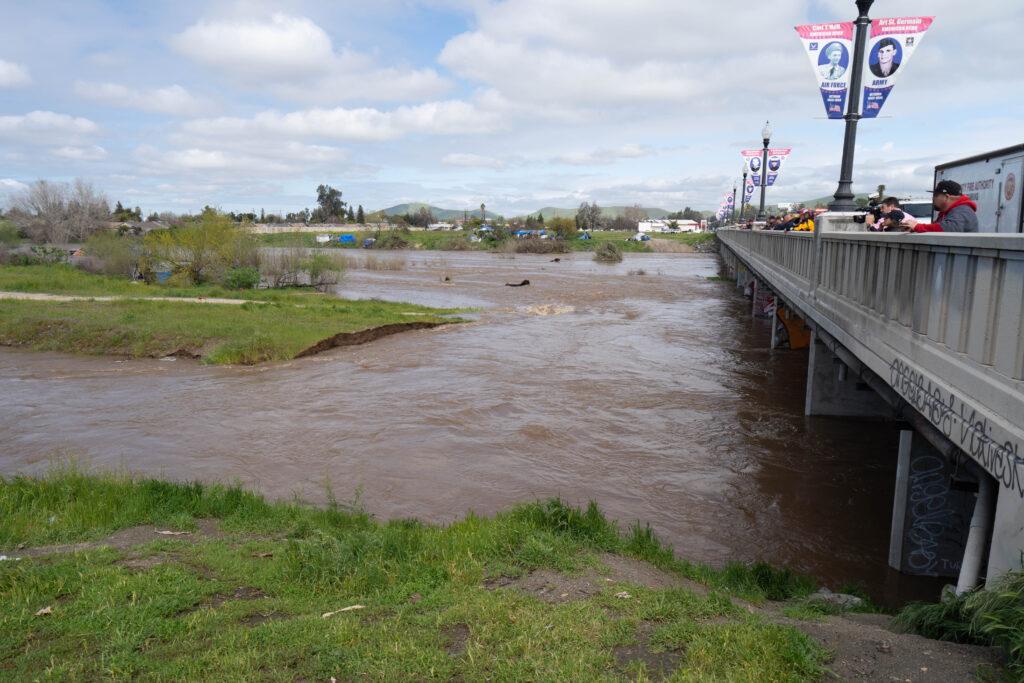How did Porterville, where a then raging Tule River cuts through the town, stay dry while so many other San Joaquin Valley communities got flooded out last spring?
Planning, coordination and permits. Sounds simple, but it took officials from the city, irrigation district, Tulare County and federal offices years to establish.
It paid off as the small south San Joaquin Valley town stood out among many of its neighboring communities for staying mostly dry.
“It’s a very difficult answer,” said Michael Knight, director of Public Works for the City of Porterville. “I give all the praise and credit to my staff.”
Because of past floods, city staff knew the importance of routine and preventative maintenance and did “extensive” preparation cleaning out all drainage systems in the city and making sure everything was functioning properly leading up to the storms this year, said Knight. They also set up sandbags ahead of time.
Porterville sits alongside the Tule River which swelled to 10,000 cubic feet per second in March after a storm. The Porter Slough also runs by the city, which was another area of concern, said Knight.

Collaboration kept them dry
It was Porterville’s coordinated plan and collaboration with other local agencies that protected pinch points such as weirs, low dams that can easily be compromised in severe floods. City staff worked with the Porterville and Lower Tule irrigation districts to fortify those points and stop water from flowing into the slough, said Knight.
A city diversion gate by east Porterville was another weak point. City staff built a berm which redirected any excess water out of the slough, he added.
At some points, the river was flowing at 12,000 cfs, said Knight.
“We definitely broke some records there,” said Knight. “And staff worked around the clock to make sure that the water stayed in the channel.”
The high velocity flows eroded much of the waterways, which city staff quickly fortified with clay and rock to keep the banks from washing away along parts of the river.
Some areas were still impacted.
Porterville’s Rio Vista community lost about 230 feet of river bank behind homes. To protect the homes from falling off into the river, staff reinforced the banks which withstood the rest of the flows, said Knight.
“These are career opportunities to see what Mother Nature can throw at you,” said Knight. “Seeing the results or the fruits of our labor in storm drain maintenance was very big. That’s kind of driven more preventive maintenance to occur.”
Permits were key
Still, the projects were only possible because the agencies have a 20-year permit from the California Department of Fish & Wildlife which dictates what work is allowed in waterways.
“It took us a long time to get it,” said Eric Limas, general manager of the Lower Tule Irrigation District.
Merced County, on the other hand, was met with years of delays from the state and was unable to secure a channel clearing permit before this year’s storms which resulted in whole communities being flooded out.
“When we were trying to get it, if we had a flood in that time, we would have been pointing to that delay,” said Limas.
It has taken six years for the irrigation district to secure maintenance permits from the state in the past, he added.
Routine maintenance of the waterways is still ongoing and staff have also had to do emergency levee repairs and waterway reinforcement, said Limas. Long term damage is still being assessed.
Despite the damages, the Porterville area might be better prepared for another wet year than in years past, said Limas.
“We’re actually, probably in a better situation because of the high flows that came last year. They made the channels basically wider and deeper and flushed them out,” said Limas.
Extraordinary flows such as those last March would still be a concern, he added.
Porterville flood collab unique
Unlike many other parts of the south valley, the Porterville area is overseen by a joint powers collaboration made up of the City of Porterville, Tulare County and the local irrigation districts. The localized oversight, planning and combination of resources prepared the area before and after the flooding.
That is not the case for many other parts of the San Joaquin Valley, most of which does not have any centralized flood oversight.
That lack of oversight led to a fragmented response across the south valley.
The Central Valley Flood Protection Board is the agency in charge of permitting and enforcement on flood infrastructure, such as levees and flood control facilities.
But the board’s ability to fund protection and recovery projects isn’t available to the San Joaquin Valley because legislators there voted to be excluded from the board’s flood protection plan in 2008, said Jane Dolan, Central Valley Flood Protection Board President.
San Joaquin Valley lawmakers had a, “we can handle it on our own,” approach, Dolan said. The plan currently covers as far south as Stockton.
Even after 2023’s widespread damage to homes, businesses and thousands of acres of farmland, there doesn’t appear to be any change to that stance.
“While discussions on how best to support long term flood planning in the Tulare Basin are on-going, there is currently no specific legislation DWR (Department of Water Resources) is aware of regarding jurisdiction of the Central Valley Flood Protection Plan,” wrote a spokesperson for DWR via email.

SJV still on its own
Dolan concurred and said there is not any movement on adding the San Joaquin Valley into the plan. Doing so would be challenging, she added
“County governments would need to want it to occur,” said Dolan. “That’s a challenging conversation. Somebody would have to step up and they would have to check to see if that’s something that’s possible.”
Even if the San Joaquin Valley were to be folded into the plan, much of it still wouldn’t be covered because of how much land is privately owned or owned by agencies such as levee districts. The amount of private acreage in the San Joaquin Valley dwarfs much of the northern Central Valley, said Dolan.
But for the areas that are covered, the Central Valley Flood Protection Plan can make a big difference.
“When there’s a tragedy, and there’s an emergency, they will respond,” Dolan of personnel and resources. “If you’re part of the state plan of flood control, you can get that federal money, you can get that state money. There’s always a local match of some sort that needs to be done but there are truly benefits to be part of a statewide system.”
Share this:
- Click to share on Facebook (Opens in new window)
- Click to share on Twitter (Opens in new window)
- Click to share on LinkedIn (Opens in new window)
- Click to share on Reddit (Opens in new window)
- Click to share on Tumblr (Opens in new window)
- Click to share on Pinterest (Opens in new window)
- Click to share on Pocket (Opens in new window)
- Click to share on Telegram (Opens in new window)
- Click to share on WhatsApp (Opens in new window)
- Click to print (Opens in new window)









You must be logged in to post a comment.